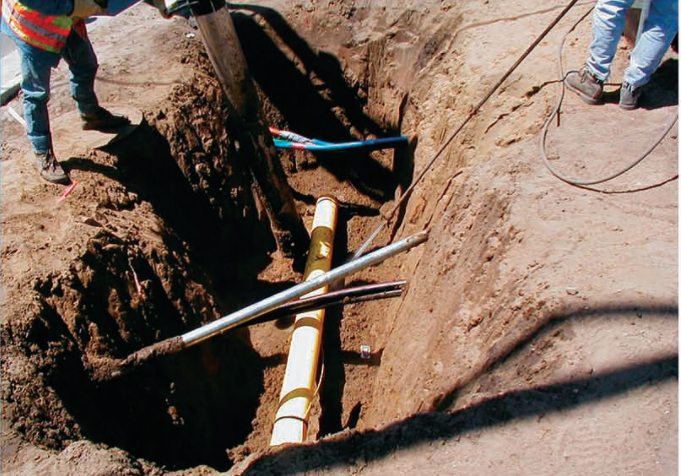Hydro Excavation services are used nationwide for safe utility location, pipe and line repairs, utility pole holes, trench excavation in congested areas, fiber line repairs, petrochemical trenching, and more.
Hydro Excavation is a non-mechanical and non-destructive process combining pressurized water and high airflow to simultaneously excavate and evacuate native soil at a controlled rate. The soil and water slurry are conveyed via an 8" tube to a truck-mounted debris tank. This process allows for quick, clean, and precise evacuations which result in less backfill, less labor force, less restoration, and less environmental impact than conventional digging methods. The controlled-flow water stream enables surgical accuracy, we remove only the material necessary for repair or inspection. Compared with the large, less-than-accurate excavator or backhoe bucket, hydro excavation is enormously more accurate and less likely to cause collateral damage.
Potholing
Potholing (daylighting) is the hydro excavation technique used to locate known subsurface utilities. It is similar to line locating, except that this approach is used when the exact position of the utility is known. Potholing is most often used when a contractor needs to verify the depth, size or type of underground utility. Potholing is also utilized for catholic protection procedures or to safely excavate holes for pole hole installations. Like most hydro excavation methods, the process starts with a simple pot hole (8 to 12 inches in diameter). With the vacuum system hovering over the designated surface area, the operator excavates straight down into the ground until the marked, known utility is located. If the utility structure is not found, the potholing procedure gives way to line locating, one of the most efficient hydro excavation methods of locating subsurface utilities.



